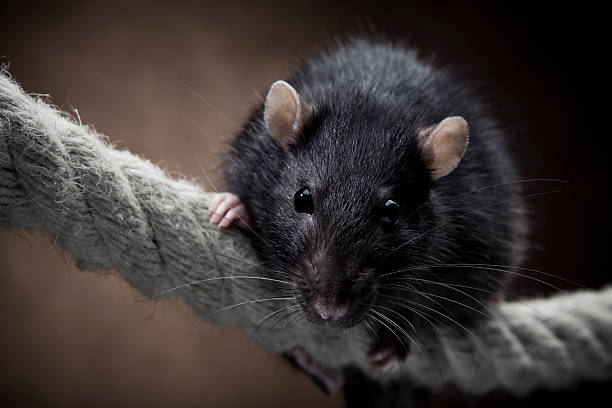Roof rats are nocturnal and secretive, so you may not see them directly. However, you can look for signs of their presence, such as:Droppings: Roof rat droppings are soft and moist when fresh, and hard and dried when old. They are about 1/2 inch (12-13 mm) long and have pointed ends. They are usually found near their nesting or feeding areas, such as attics, rafters, roofs, trees, or vines.
Gnaw marks: Roof rats gnaw on wood, metal, plastic, electrical wires, and other materials to access food, water, or shelter, or to keep their teeth from growing too long. They leave behind small holes, scratches, or shavings that may expose the inner layers of the material.
Nests: Roof rats build their nests in high places, such as attics, rafters, roofs, trees, or vines. They use materials like shredded paper, fabric, insulation, or plant matter to make their nests cozy and warm. They may also use abandoned bird nests or squirrel dreys as their homes.
Rub marks: Roof rats leave behind greasy or dirty trails along their regular routes, such as walls, pipes, or beams. These marks are caused by the oils and dirt on their fur rubbing against the surfaces. They may also leave footprints or tail marks on dusty or muddy areas.
Noises: Roof rats make scratching, squeaking, or scurrying sounds as they move around in the dark. You may hear them in the attic, walls, or ceilings, especially at night when they are most active.
If you see any of these signs, you may have a roof rat infestation in your home or property. You should act quickly to get rid of them, as they can cause damage, contamination, and disease. You can contact a professional pest control service or use traps, baits, or repellents to eliminate them. You can also prevent them from entering or returning by sealing any gaps or holes, removing any food sources, and trimming any vegetation that provides them access or shelter.
When to call an roof rats exterminator ?The best is to call us as soon as possible. We service the Greater Toronto Area, call us now 647 849 4441
Call us today to speak with our roof rats exterminator
GTA Exterminators for roof rat removal in Toronto
Call us today for norway rat extermination


